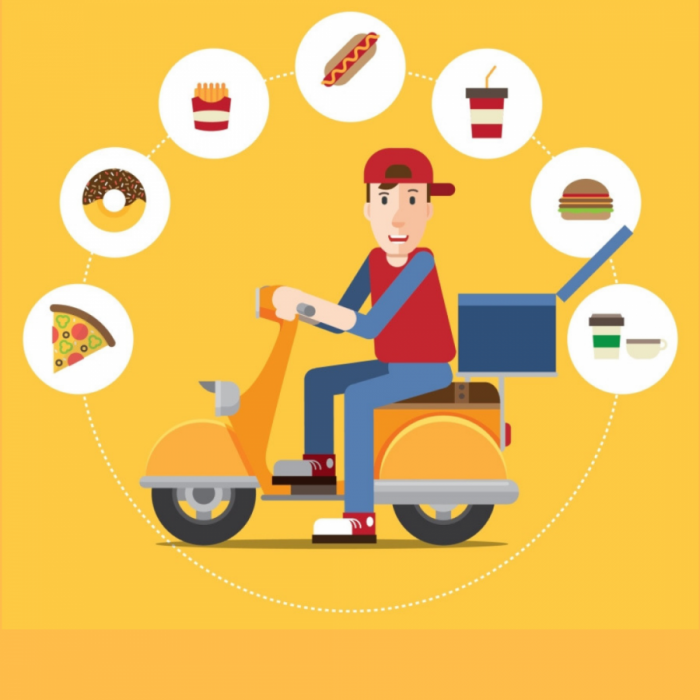What is the Business Model of food delivery apps?
Background of Food Delivery apps
Food delivery apps or food-tech is no longer a cliché and is one of the most used services in the world today.
With the advent of technology especially mobile apps, these food delivery apps have tapped on the “convenience” factor and are one of the fastest-growing sectors in food-tech business.
Food delivery apps are mainly lead/order generation and logistics aggregator in the foodservice space.
Curiosity seeks information
I am writing this article based on my personal preferences and habits wherein ordering food online or through an app using food delivery apps like Swiggy, Zomato, talabat, Ubereats, deliveroo has become a norm for me, whether it is just a casual dining option or ordering food for family get-togethers, I have become habitual of using these food delivery apps.
Being a curious person, I wanted to study as to how these food delivery apps make money, what is their business model?
I have deeply researched this subject and found some interesting facts.
I am sharing these facts and my learnings on this topic since it is an interesting sector that has evolved in the last 5 years or so.
Thanks of course to technology and let me also highlight that it has provided jobs to several people and provided them with a steady income.
Hence this food-tech is not only creating additional jobs but contributing to the overall socio-economic foundation.
Interesting stats for food delivery apps:
As per statista.com, the market size of food delivery apps in the United Arab Emirates will be worth about 13.2 billion U.S. dollars in the UAE by the end of 2018.
26% of people order food online at least once a week while another 24% do so two or three times a week.
The surge in food delivery apps in recent years is a clear signal of their success.
This sector is working on one premise, “fulfilling your craving for food by providing your desired food at your doorstep in the most convenient and time-saving manner”.
What led to the growth of food delivery apps?
The restaurant business involves high investments in space and equipment. Operating expenses are also high, with raw material contracts and staff — for every minute these aren’t utilized, they lose value and hit margins.
The only way to make money is to ensure a growing number of orders – that’s where food tech or food delivery apps come to their rescue.
Restaurant sector forms a part of an unorganized sector wherein there are big restaurant chains (dominated by MNCs) and various small restaurant owners & cafeterias who cater to their close proximity customers by delivering ordered food through their own carrier, most of the time a delivery boy using a bicycle.
Food delivery apps have given these small restaurants an opportunity to reach wider geographies and increase their top line orders.
As per statistical data in India alone, Zomato has recently crossed the three million deliveries a month mark.
This is in just two years since launching the meal delivery service.
It has 25,000 restaurants on its platform in India, including 7,500 that are exclusively available only on Zomato.
Modes of revenue for food delivery apps:
Commission from Restaurants:
The commissions earned from restaurants form the primary source of revenue for these food delivery app companies.
The quantum of the commission depends upon a lot of factors which include the value of the order as well as the location and popularity of the restaurant.
All these food Apps charge a commission to the restaurant between 22–30% on each order placed. The discounts are extended by the restaurants individually.
Swiggy, Zomato, and Ubereats also charge an additional amount for ads within their platforms for the positioning of a restaurant in a particular category.
Featured Lists:
These food delivery apps charge restaurant fees for featuring them in their curated list of restaurants on their app/website.
Being featured on such curated lists often helps these restaurants find more business.
Daily deals:
These food delivery apps, especially Swiggy & Zomato tie-up with the restaurants by offering a deal on one of the best dishes that a particular restaurant has to offer at throwaway prices. These apps promote them on their deal pages and orders are generated and passed onto the restaurants who use the principle of upselling the side dish orders or beverages with the deal or discounted dish. It offers win-win solution to both customers and restaurant owners. Higher the ticket price, more commission for the food delivery apps.
White labeling:
Another one which not many may be aware of. In India, Swiggy has entered into white labeling restaurants.
Products are sold with Swiggy branding, and the restaurant has no existence for the client. Swiggy generates great revenue for them and takes care of most hassles. A home run for the ones who wish to only generate revenue.
Are Food delivery apps like Zomato and Swiggy making money?
Here comes the most difficult trivia, a question that most of the finance professionals in food business hate to answer.
Foodtech startups follow a premise that roti (food), kapda(clothes) aur makaan (home) could never go out of demand, but over time many of them faced an early death.
By 2016, several food startups – TinyOwl, and EatOnGo – were out of the fray; Only the ones with deeper pockets and funding have survived the bloodbath.

However, there are only a few players like Ubereats, Zomato, Talabat, Swiggy who survived the first stage.
Investors, Venture capitalists, and entrepreneurs have burnt their fingers and realized that food is a tough business.
The way forward: Recipe for success
With all the funding’s, the most crucial aspect of food delivery app would be
Last-mile deliveries
(Want to learn more about last-mile logistics? click here)
Hub & spoke model:
Both Zomato and Swiggy have also launched the cloud kitchen vertical, where the company provides the space and sets up a physical kitchen for participating restaurants that just have to get the food made and fulfill deliveries.
Whether these food tech or food delivery apps make a profit in years to come, only time will tell.
Currently, they all depend on VC funding based on valuations and top-line order generation.
Check out this interesting video which would summarize my article holistically.

I would like to end my article by a wonderful quote by Virginia Woolf
“One cannot think well, Love well, sleep well if one has not dined well”.
Quote summarizes the future of food delivery apps and their usage going forward.
About the author:
Ritesh Mohan is a passionate retail professional with over 20 years in the Retail sector, handling some of the biggest brands in beauty, fashion, and fragrances retail & FMCG sector. Ritesh has been instrumental in the growth of some of the regional brands as well in the Middle East region. He specializes in Retail management, Product development, and Brand Management, Retail Operations, Sales Management and Franchising & Business Management. He strongly believes in empowering business owners with his wisdom & experience of around two decades in the industry.





January 8, 2019 @ 7:02 pm
Very interesting detailing abt food apps..
In uae Zomato & talabat have a market share .However I wonder how profitable are other apps like ubereats, deliveroo etc… here most restaurants have their own delivery system.
In india it is a different story though.
January 14, 2019 @ 2:30 pm
thanks rahul I am glad that you liked the article
Is your social media strategy working for your brand? If not, learn from these case studies. - Retail Ritesh
November 28, 2019 @ 11:34 am
[…] Learn how food delivery apps like swiggy, zomato makes their money, click here. […]
April 1, 2020 @ 7:01 pm
Thanks a lot for the through article
What do u suggest for bakeries
Talabat subscription is high
April 2, 2020 @ 7:49 am
alternatively, you could focus on brand building of your bakeries and use google ads for getting traction and once you establish is a leading bakery, you can then leverage your brand name in negotiating with food delivery apps like talabat, zomato etc.
Walmart -7 things the Middle Eastern retailers could learn. - Retail Ritesh
May 8, 2020 @ 7:43 pm
[…] learn more about the business model of food delivery apps, click here. […]
What is the Last-Mile Logistics & Why Ecommerce retailers are looking at this logistics function? - Retail Ritesh
May 24, 2020 @ 7:03 pm
[…] learn about the business model of food delivery apps, click here. […]
How to influence diners? Restaurants post covid19 - Useful insights - Retail Ritesh
June 2, 2020 @ 1:46 pm
[…] learn about the business model of food aggregators, click here. […]
The Union Budget 2022 – Analysis and Perspectives. - Simplifying retail
February 5, 2022 @ 11:20 am
[…] Learn about the business model of food delivery apps, click here […]